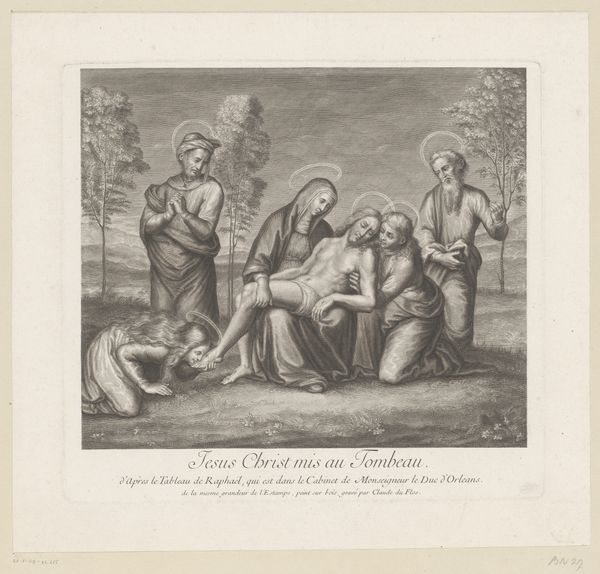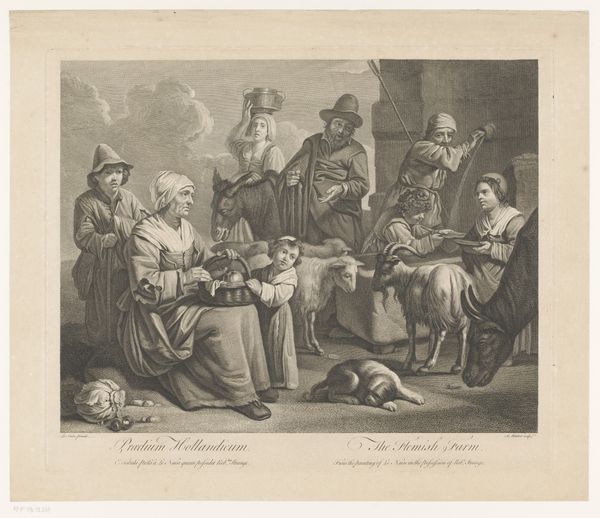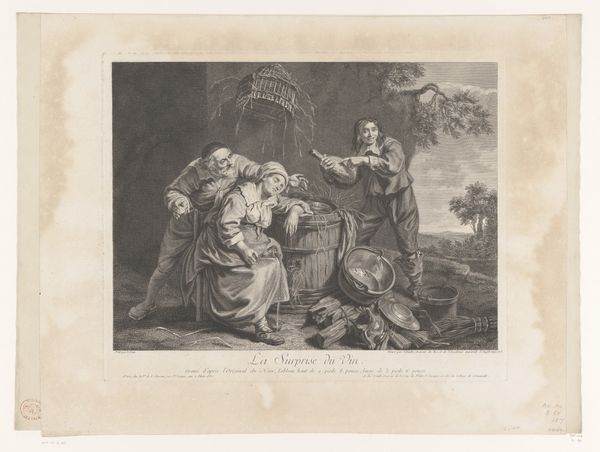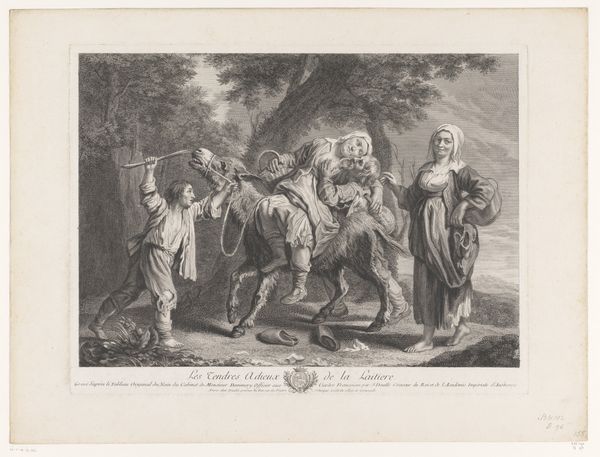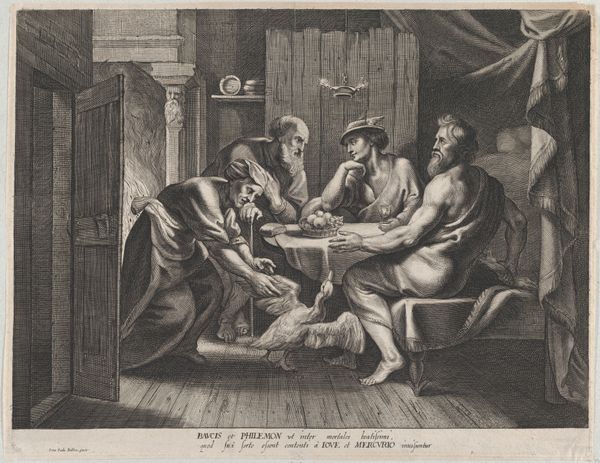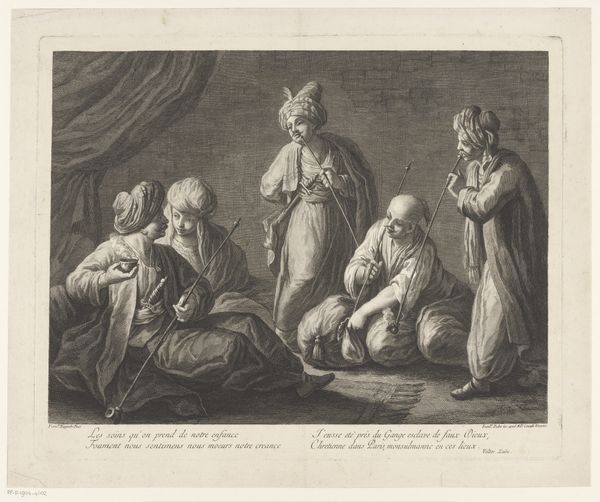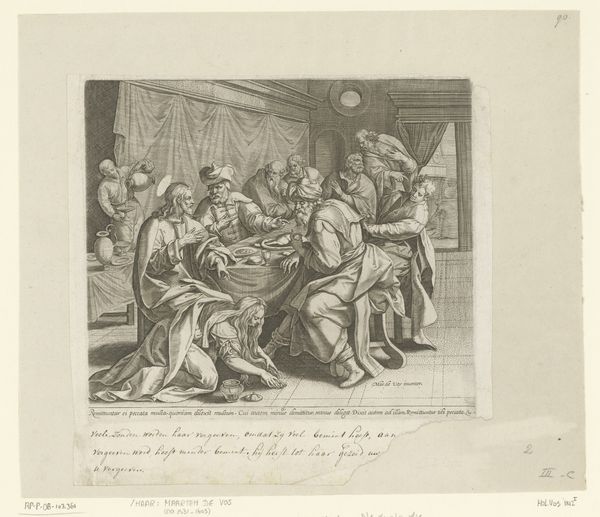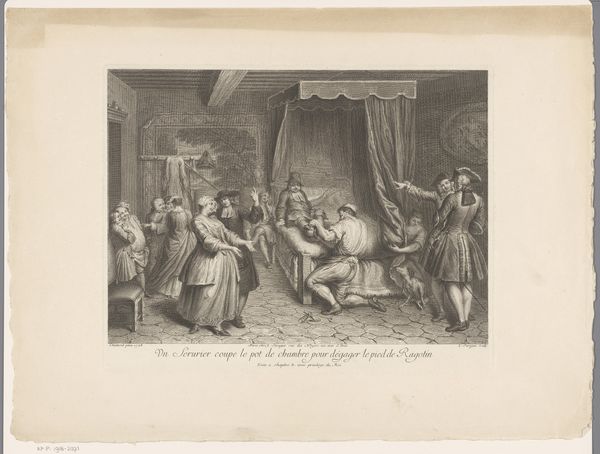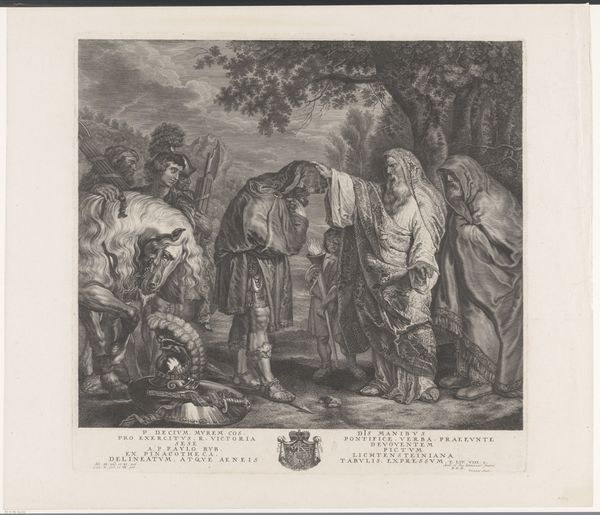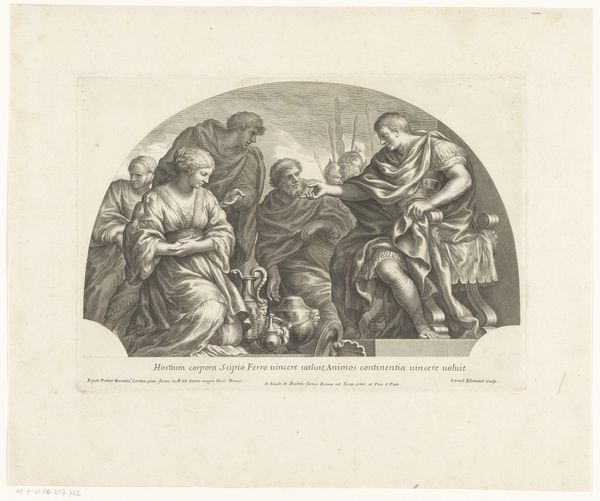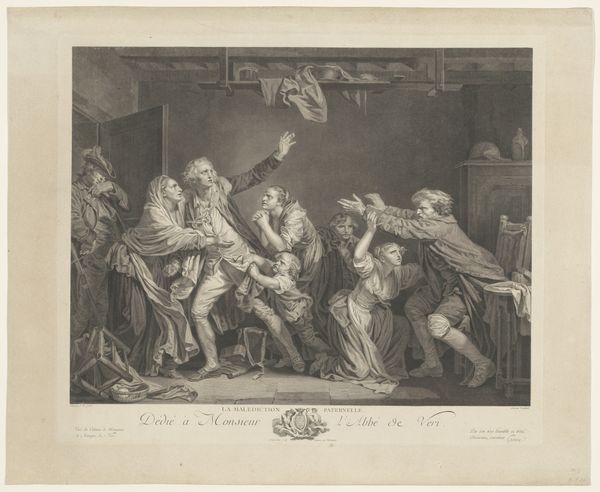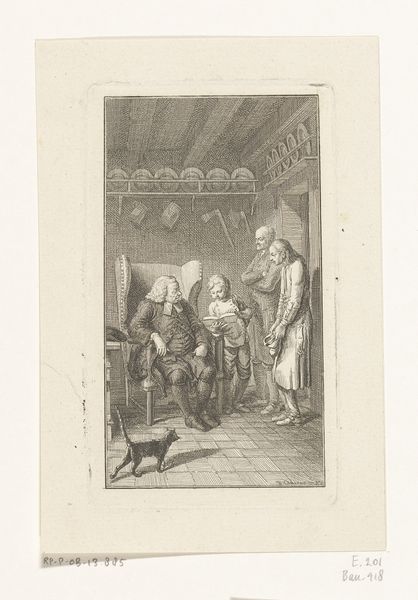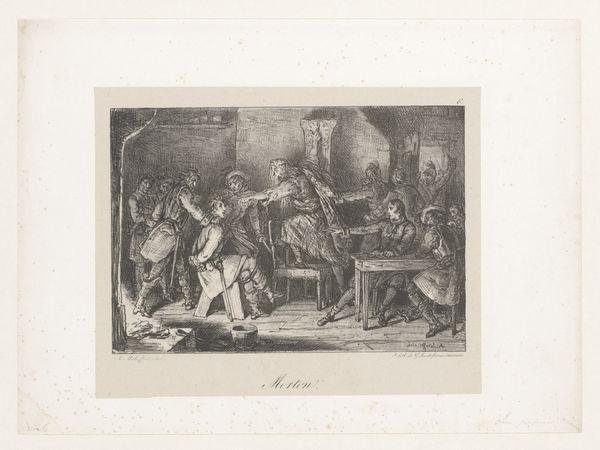
Dimensions: height 421 mm, width 490 mm
Copyright: Rijks Museum: Open Domain
This engraving, Belisarius, was made by Louis Bosse sometime between 1690 and 1830. Engraving is an intaglio process, meaning the image is incised into a surface – in this case, a copper plate. Look closely, and you can see how the lines define the forms, from the folds of Belisarius’s robes to the details of the armor. The quality of the line is everything in an engraving. Bosse would have used a tool called a burin to carve into the metal, with absolute precision. Imagine the intense focus required to produce such intricate work! The copperplate could then be inked and used to make multiple prints on paper, allowing the image to be widely distributed. This reproductive technology democratized visual culture, making art accessible to a broader audience than ever before. Prints like these played a crucial role in disseminating knowledge, shaping taste, and fueling the engine of commerce. It’s a testament to the power of craft in a rapidly changing world.
Comments
No comments
Be the first to comment and join the conversation on the ultimate creative platform.
